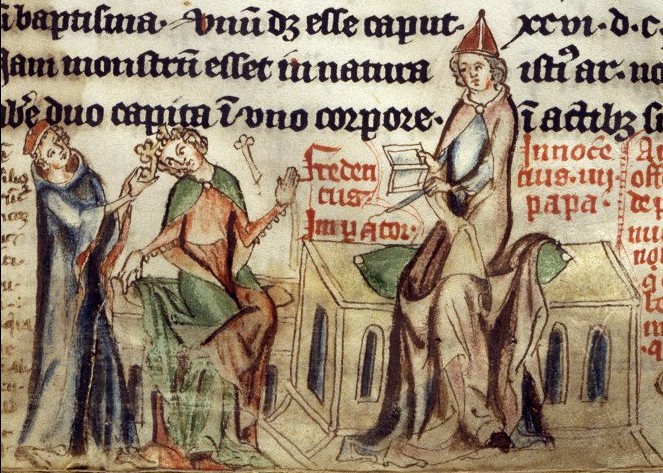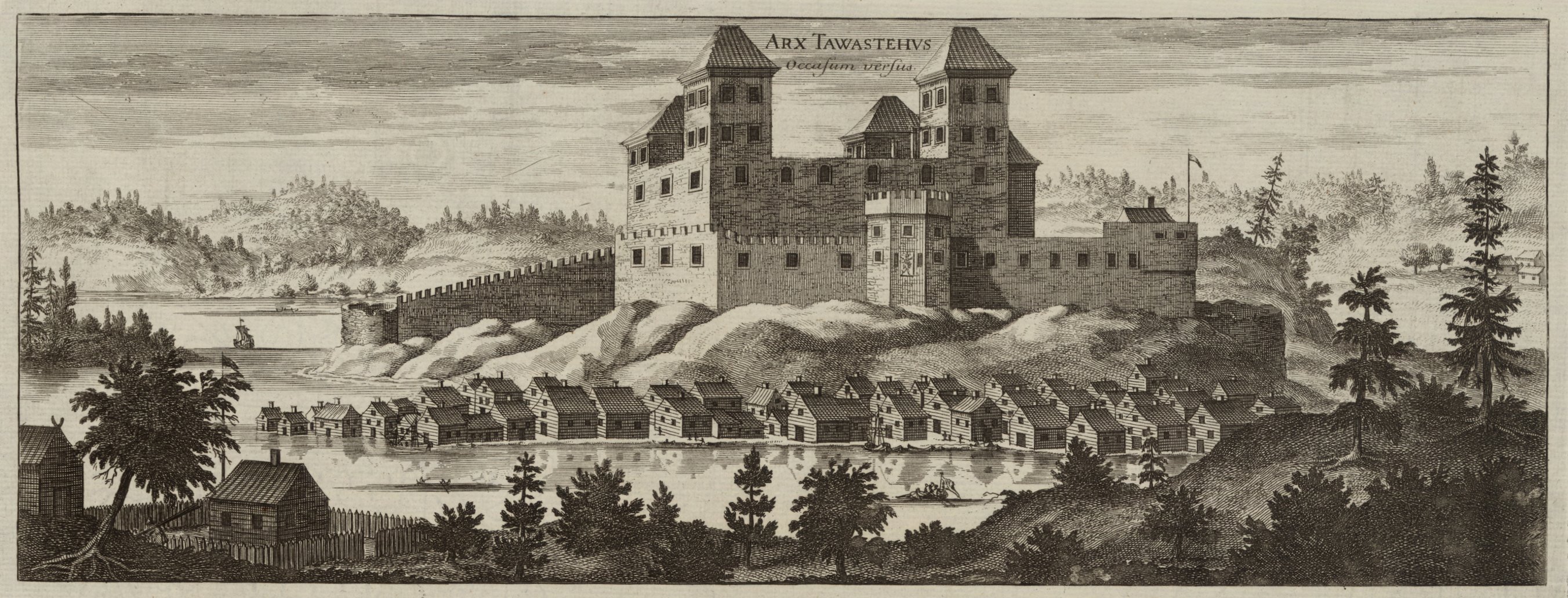|
Second Swedish Crusade
The Second Swedish Crusade was a possible 13th-century Swedish military expedition against the Tavastians, in present-day Finland, led by Birger Jarl. Many details of the Crusade are debated. After the crusade, Tavastia gradually started to fall under the rule of the Catholic Church and the Swedish kingdom. Background Sweden had been starting to exert control over Finland at least since the beginning in the 13th century, starting with Finland proper. In 1220, Sweden tried to join in on the Baltic Crusades, but could not hold on to their foothold in Estonia. There are notes of Swedish churchmen, possibly led by Finland's bishop Thomas, being present in Tavastia ca 1230, and papal letters deplored how slowly Christianity gained ground in Finland. There was apparently a backlash against the missionaries (the Häme insurrection), and in 1237, Pope Gregory IX sent out a call for the Swedes to take up arms in a crusade against the "apostates and barbarians". Sources All details ... [...More Info...] [...Related Items...] OR: [Wikipedia] [Google] [Baidu] |
Northern Crusades
The Northern Crusades or Baltic Crusades were Christianity and colonialism, Christian colonization and Christianization campaigns undertaken by Catholic Church, Catholic Christian Military order (society), military orders and kingdoms, primarily against the paganism, pagan Balts, Baltic, Baltic Finns, Finnic and West Slavs, West Slavic peoples around the southern and eastern shores of the Baltic Sea, and to a lesser extent also against Eastern Orthodox Church, Orthodox Christian Slavs (East Slavs). The most notable campaigns were the Livonian Crusade, Livonian and Prussian Crusade, Prussian crusades. Some of these wars were called crusades during the Middle Ages, but others, including most of the First Swedish Crusade, Swedish ones, were first dubbed crusades by 19th-century romantic nationalism, romantic nationalist historians. However, crusades against Estonians, but also against '''other pagans in those parts''' were authorized by Pope Alexander III in the bull ''Non parum ani ... [...More Info...] [...Related Items...] OR: [Wikipedia] [Google] [Baidu] |
Battle Of Sparrsätra
The Battle of Sparrsätra, fought between the forces of King Eric XI of Sweden and rebels led by Holmger Knutsson, took place in 1247 near Enköping in Sweden. It occurred during a poorly documented period in Swedish history; as a result, many details are uncertain and conjectural. Although it was not the end of the Folkung rebellion, many scholars consider it to have marked the end of the old order, leading to the Uppland Swedes' loss of their semi-aristocratic status, and to the beginning of taxation by the King. Background Since pre-historic times the Swedes of Uppland had elected the king of Sweden, and their responsibility towards him lay not in paying taxes, but in providing warriors and ships for the leidang organization. Many scholars consider the reasons for the battle to have been the abolition of the leidang organization and its replacement with monetary taxes. The people of Uppland also appear to have refused to pay tithes to the church.Lindström & Lindström 2006, p ... [...More Info...] [...Related Items...] OR: [Wikipedia] [Google] [Baidu] |
William Of Modena
William of Modena ( – 31 March 1251), also known as ''William of Sabina'', ''Guglielmo de Chartreaux'', ''Guglielmo de Savoy'', ''Guillelmus'', was an Italian clergyman and papal diplomat. In: Salvador Miranda: The Cardinals of the Holy Roman Church. Website of . He was frequently appointed a legate, or papal ambassador by the popes and |
Papal Legate
300px, A woodcut showing Henry II of England greeting the pope's legate. A papal legate or apostolic legate (from the ancient Roman title ''legatus'') is a personal representative of the pope to foreign nations, or to some part of the Catholic Church. He is empowered on matters of Catholic faith and for the settlement of ecclesiastical matters. The legate is appointed directly by the pope—the bishop of Rome and head of the Catholic Church. Hence a legate is usually sent to a government, a sovereign or to a large body of believers (such as a national church) or to take charge of a major religious effort, such as an ecumenical council, a crusade to the Holy Land, or even against a heresy such as the Cathars. The term ''legation'' is applied both to a legate's mandate and to the territory concerned (such as a state, or an ecclesiastical province). The relevant adjective is ''legatine''. History 200px, Cardinal Thomas Wolsey, papal legate to England during the reign of Hen ... [...More Info...] [...Related Items...] OR: [Wikipedia] [Google] [Baidu] |
Gotland
Gotland (, ; ''Gutland'' in Gutnish), also historically spelled Gottland or Gothland (), is Sweden's largest island. It is also a province, county, municipality, and diocese. The province includes the islands of Fårö and Gotska Sandön to the north, as well as the Karlsö Islands ( Lilla and Stora) to the west. The population is 61,001, of which about 23,600 live in Visby, the main town. Outside Visby, there are minor settlements and a mainly rural population. The island of Gotland and the other areas of the province of Gotland make up less than one percent of Sweden's total land area. The county formed by the archipelago is the second smallest by area and is the least populated in Sweden. In spite of the small size due to its narrow width, the driving distance between the furthermost points of the populated islands is about . Gotland is a fully integrated part of Sweden with no particular autonomy, unlike several other offshore island groups in Europe. Historically there was ... [...More Info...] [...Related Items...] OR: [Wikipedia] [Google] [Baidu] |
Dominican Order
The Order of Preachers ( la, Ordo Praedicatorum) abbreviated OP, also known as the Dominicans, is a Catholic mendicant order of Pontifical Right for men founded in Toulouse, France, by the Spanish priest, saint and mystic Dominic of Caleruega. It was approved by Pope Honorius III via the papal bull ''Religiosam vitam'' on 22 December 1216. Members of the order, who are referred to as ''Dominicans'', generally carry the letters ''OP'' after their names, standing for ''Ordinis Praedicatorum'', meaning ''of the Order of Preachers''. Membership in the order includes friars, nuns, active sisters, and lay or secular Dominicans (formerly known as tertiaries). More recently there has been a growing number of associates of the religious sisters who are unrelated to the tertiaries. Founded to preach the Gospel and to oppose heresy, the teaching activity of the order and its scholastic organisation placed the Preachers in the forefront of the intellectual life of the Middle Ag ... [...More Info...] [...Related Items...] OR: [Wikipedia] [Google] [Baidu] |
Bishop Of Finland
The Archdiocese of Turku ( fi, Turun arkkihiippakunta, sv, Åbo ärkestift), historically known as '' Archdiocese of Åbo'', is the seat of the Archbishop of Turku. It is a part of the Evangelical Lutheran Church of Finland, and its see city is Turku. The Archbishop has many administrative tasks relating to the National church, and is the Metropolitan and Primate of the church. In common with other Lutheran and Anglican churches the Archbishop is considered ''primus inter pares'' while all diocesan bishops retain their independence within their respective jurisdictions. This also applies to the Bishop of Turku Archdiocese. The Archdiocese of Turku has a unique episcopal structure as there are two bishops in the Diocese. History Influenced by papal bulls, Swedish magnates in the 12th century set up crusading expeditions to convert the heathens in the eastern Baltic. This resulted in the establishment of the Catholic Church, the Christian religion and the Swedish conquest of s ... [...More Info...] [...Related Items...] OR: [Wikipedia] [Google] [Baidu] |
Pope Innocent IV
Pope Innocent IV ( la, Innocentius IV; – 7 December 1254), born Sinibaldo Fieschi, was head of the Catholic Church and ruler of the Papal States from 25 June 1243 to his death in 1254. Fieschi was born in Genoa and studied at the universities of Parma and Bologna. He was considered in his own day and by posterity as a fine canonist. On the strength of this reputation, he was called to the Roman Curia by Pope Honorius III. Pope Gregory IX made him a cardinal and appointed him governor of the March of Ancona in 1235. Fieschi was elected pope in 1243 and took the name Innocent IV. As pope, he inherited an ongoing dispute over lands seized by the Holy Roman Emperor, and the following year he traveled to France to escape imperial plots against him in Rome. He returned to Rome after the death in 1250 of the Emperor Frederick II. Early life Born in Genoa (although some sources say Manarola) in an unknown year, Sinibaldo was the son of Beatrice Grillo and Ugo Fieschi, Count of Lavag ... [...More Info...] [...Related Items...] OR: [Wikipedia] [Google] [Baidu] |
Hakoinen Castle
Hakoinen Castle (''Hakoisten linnavuori'' in Finnish) is the ruins of a fortification on a hill in Janakkala, Finland. Dated to the medieval period, the fortification was situated on a very steep-sided rock by Lake Kernaala (''Kernaalanjärvi'') in a manner reminiscent of the hill fort tradition. The top of the rock is above the water level of the lake. Today very little remains of the castle. Equally little is known about its origins. The name of the castle is not historical and was taken from the nearby Hakoinen mansion (''Haga gård'' in Swedish). The original name is not known, but it may have been "Häme Castle" (''Tavastehus'' in Swedish) which today is used for a later castle in the nearby town of Hämeenlinna. A source from 1625 calls Hakoinen as the "old Tauaste hus". "Tauestahus" Castle is first mentioned in sources in 1308. The castle was probably built at the end of the 13th century or in the early 14th century. It has been speculated that Hakoinen might have been th ... [...More Info...] [...Related Items...] OR: [Wikipedia] [Google] [Baidu] |
Häme Castle
Tavastia Castle or Häme Castle ( fi, Hämeen linna, sv, Tavastehus slott) is a medieval castle in Tavastia Proper, Finland. It is located in Hämeenlinna, the city between Helsinki and Tampere. Originally located on an island, the castle now sits on the coast of lake Vanajavesi. The castle consists of a central keep and surrounding curtain walls, enclosed by a moat. The keep originally had five turrets, but only two are apparent today. The curtain wall has a gatehouse, battlements, an octagonal brick corner turret, and a round gun turret. The lower tiers of the keep and curtain wall are of masoned granite and the upper tiers are red brickwork. Although the exact date is disputed, the castle is generally considered to have been constructed in the 13th century. In addition to its status as a military fortress and home for Swedish nobility, the castle has seen use as a prison, and is currently a museum operated by the Finnish National Board of Antiquities. The castle is one of the ... [...More Info...] [...Related Items...] OR: [Wikipedia] [Google] [Baidu] |
Dick Harrison
Dick Walther Harrison (born 10 April 1966) is a Sweden, Swedish historian. He is currently a Professor of History at Lund University. His main areas of interest are the European Middle Ages, including the medical history of the period and the history of slavery. Harrison regularly writes articles for the Swedish journal ''Populär Historia'' (Popular History). He has also written popular historical works and, during Spring 2010, a blog covering the history of monarchs and monarchies with emphasis on the Swedish monarchy. Harrison regularly gives lectures to the general public on a broad range of historical topics. Harrison is the editor-in-chief of a comprehensive series about Swedish history published by Norstedts with the first volume released in September, 2009. The Swedish TV channel TV4 has made a companion television series for which Harrison is the historical consultant and co-host along with Martin Timell. The TV series has 12 episodes of which the first six aired on TV4 ... [...More Info...] [...Related Items...] OR: [Wikipedia] [Google] [Baidu] |
.jpg)
.jpg)




